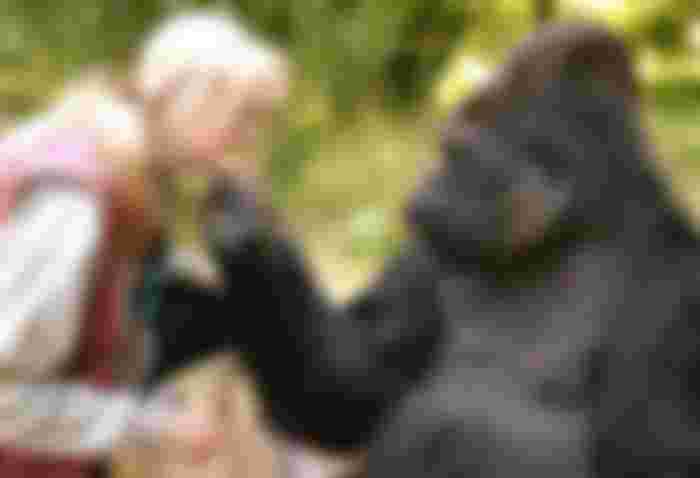There are more and more signs are showing us, that not only human beings are able to think in this world. What is more, not only we have consciousness. By having consciousness, it means have an ability to think. Any being that's thinking knows: "I am somebody" and also knows: "I am different from others and from anything that surrounds me."
In Protection Of Our Little Siblings
The number of people, who believe, that the animals are essentially our siblings is increasing. Because they are unprotected, they are unable to stress their needs and their rights, so we, the older siblings have to stand up for them. Are those people right, who say, although we don't protect the ants, worms or the sparrows, we still have to stand up for those animals who have consciousness and more developed? Nowadays the scientists conceive, that there are three things need to be there to designate an animal to be conscious. Some sort of "language" that can be used to contact with their species (sometimes with human beings), thinking and ability to live a social way of life.
Scientists in their experiments with animals, tried to find the common language. The whistling sound of the dolphins, the gibber of the monkeys and the body language of the dogs are all about this. The most successful achievement was with the monkeys, because it was easily proven many times, that they are able to think. Since they understand a question, then they answer to it. It is as much as saying that there is a process takes place in their brain, which proves, that they are thinking beings. Other than them is not typical. During a scientific experiment, in a chimpanzee's room (not in a cage) a mirror was placed and left there for months.
One day this chimpanzee was narcotized and a red dot was painted on his forehead. When he woke up, he run to the mirror to look at himself like he did every day. By seeing the dot he tried to clean it off. The simple, but important scientific establishment was, that the chimpanzee knew, that it is him. That, what he sees in the mirror, that is himself and not another one. These medical and psychological experiments with the chimpanzees, reminded the process, that took place with babies, because it was very similar to them. We cannot say, that the monkeys are smart. Their mental level is not equal with a seven year old child, since they don't know much about the world, whereas a child knows more.
Meet Washoe
Still the persistent work worth the effort and it shows how intelligent the animals are. There was a female chimpanzee called Washoe. She was taught to communicate by using the American sign language, so she was able to communicate with deaf and mute people just about anything. Even about things, that she was interested in. Of course those were simple and short sentences and the level of the communication was primitive, but once the common language was found, it was possible to look into Washoe's mind and understand more about her way of thinking. It was also possible to understand what her intention was and how she saw people living around her and other monkeys.

It is unquestionable, that Washoe had consciousness, it was clear to her who she is and what she is doing in the world. She was able to create new words whenever it was needed to be created. She had been learning the sign language for twenty years and she could express a lot of things, but sometimes she was unable to answer or express herself, when she saw something, that was new to her. One day the scientists took her to a boat trip and she saw a swan. She had never seen a swan before. She signed as it were a water bird. She knew the sign for water and the sign for bird, so she combined the two, since she saw a bird on the water. This proves, that Washoe was thinking.
Meet Koko
It is not typical, that monkeys would use the internet, but there was a female gorilla called Koko, who was the first non-human being, who was "chatting" on the internet in 1998. She answered to questions that was asked from all over the world. Koko told with her own signs, that how she lives, she would have descendants and what she thinks about freedom.

Meet Kanzi
A male chimpanzee Kanzi, who was still very young, the experiments took place with his mother. Kanzi was sitting there and observed, that how the scientists communicated with his mom. Then unexpectedly he interacted. It turned out, that he learned at least as much as his mother in the past months. They were taught to listen and understand sentences. While the dogs for instance understand short words like sit, roll and wait, Kanzi and his mom was able to understand longer sentences with four, five words. It is still unknown, what shows exactly, that an animal has self conciseness. Nowadays the animals minds are a very interesting topic.

Human mind is the most incredible thing and the human brain is the most complicated and most developed three-pound organ in the world, but we are not the only ones who are able to think. For the animals, beside the conciseness and thinking, the emotions are playing an important role too. If we observe a group of monkeys for a longer period, we would learn, that their conflicts are similar to human conflicts and the solution to deal with the conflicts is human like too. If two adult animals involve in a conflict, then older adults in the group usually females, try to do everything to stop the conflict. Therefor there is an intention to find a solution to stop them in peace.
Between mothers and their children and between couples the emotion shows very strongly, thus the scientists get emotional too.




